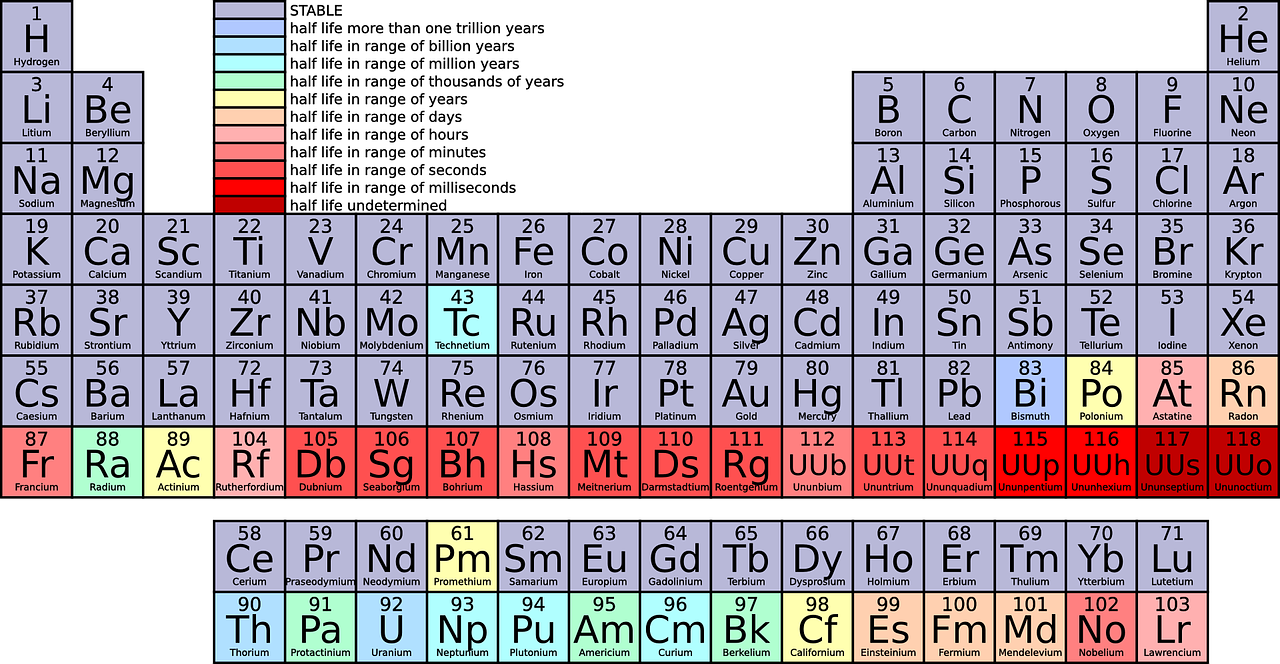The Periodic Table
Elements are classified according to their Chemical Properties.
The table below is a simplified classification of the properties of metals and non-metals as we discovered from our previous activity.

Our experiments included these observations.
- Some elements such as Sodium and Potassium are very reactive in water.
- Other elements such as Calcium and Magnesium were mildly reactive or somewhat reactive.
- Others such as Iron were very slow to react.
- And elements such as Carbon and Sulfur did not react at all.
This table summarizes these findings.
| Very Reactive | Somewhat Reactive | Slow to React | Non-Reactive |
| Sodium | Calcium | Iron | Carbon |
| Potassium | Magnesium | Sulfur | |
This is in fact a very simplified version of the periodic table; a table that groups elements according to their chemical properties.
The first scientist who recognized that elements could be grouped according to their chemical properties was the Russian Mendeleyev. He therefore organized the elements known to him at the time in a table according to the "masses" of their atoms, their atomic masses and their chemical properties.
His findings were so remarkable that he revolutionized the study of Chemistry. He even predicted the existence of elements that had not been discovered yet.
The modern periodic table organizes elements according to their atomic numbers but uses the same principle as the original table proposed by Mendeleyev. Elements are grouped in vertical columns called Groups, according to their chemical properties and in horizontal rows, called Periods in order of increasing atomic numbers.
This way of organizing elements is what we call the Periodic Law.
 |
Important Facts to Remember:
- There are 18 Columns called Groups across the table
- Horizontal Rows are called Periods
- Atomic Size Increases from left to right across periods and from top to bottom along groups.
- There are only two liquid elements found at room temperature (Bromine, Mercury)
- There are 11 gases found at room temperature (Hydrogen, Nitrogen Oxygen, Fluorine, Chlorine, Helium, Neon, argon, Krypton, Xenon, Radon).
- The first Group (starts with hydrogen) is known as the Alkali metals.
- The Second group (starts with beryllium) is known as the Alkaline Earth metals.
- The Big Block found in the middle from Scandium (Sc) to Zinc (Zn) is known as the Transition Metals
- all the true metallic elements such as iron, copper, zinc, gold etc.. are found here.
- The group that starts with Copper (Cu), contains the metals known as coinage or precious metals. These metals (copper, gold, silver) are used to make coins, medals, and jewelry
- The Group that starts with Fluorine is group number 17 and it is known as the Halogens.
- The last group (Number 18) is known as the Noble gases (or Inert Gases). These gases are usually very non-reactive and are used to preserve antique artifacts in museums or in specially made glass cases. The famous Shroud of Turin (the cloth with the imprint of the face of Jesus) is preserved in a glass case filled with Argon and Helium.
- Elements running diagonally down from Boron are known as semi-metals, or metalloids, and are used in the semiconductor industry to make micro chips, transistors and other electronic devices. these elements include Silicon, Germanium, Gallium and Selenium


